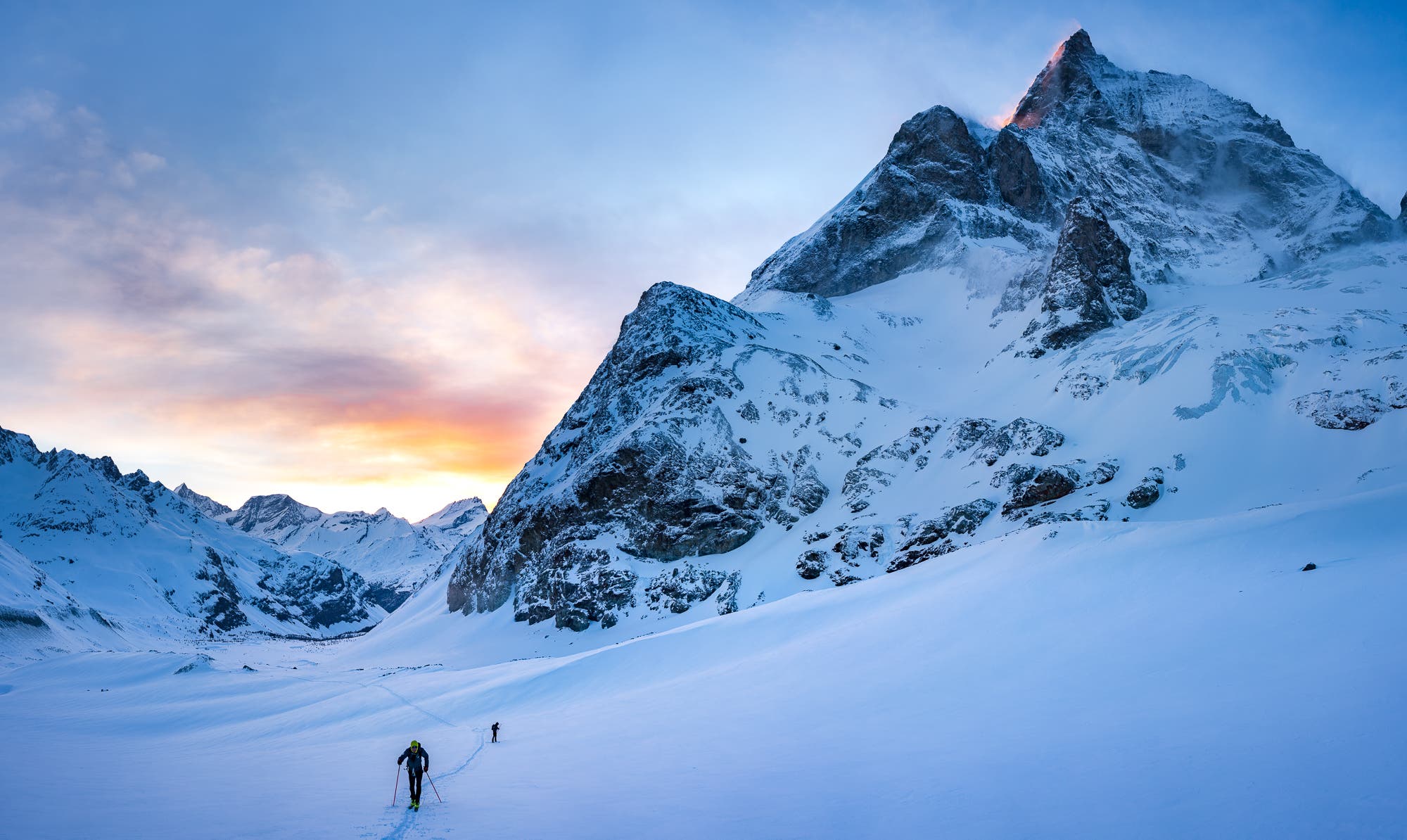What Does Remote Learning Look Like For Backcountry Skiers?

Photo credit: Mark Smiley
With uncertainty hovering around resorts this season, more skiers than ever are getting ready to hit the skintrack and earn their turns this winter. “We’re bracing for a big season,” says Vickie Hormuth, Executive Director of the American Institute of Avalanche Research and Education (AIARE). “From the data we saw in the spring from our retail and public land partners, we’re anticipating welcoming many new skiers into the backcountry.”
More skiers means a need for more widespread opportunities in avalanche education, one that proves difficult with COVID-related limitations to classroom time and in-person learning. But pandemic or no pandemic, the cost of traditional avalanche education is prohibitive for many skiers.
Up until now, any recreational skier in the United States looking to begin or advance their backcountry education will take the standard Rec 1 or Rec 2 courses offered by the American Avalanche Institute or the American Institute for Avalanche Research and Education. Classes are anywhere from three to five days, and incorporate a few days of classroom time with a few days out in the field. The average cost of Rec Level 1 is $450 to $600, not including time off work and travel.

Last year, Mark Smiley launched MTN Sense, an extensive set of online courses for skiers and climbers. The courses teach touring techniques, ski mountaineering skills, navigation, route planning, crevasse rescue, and tons of other lessons Smiley has learned over his decades as a guide and athlete. On October 13, 2020, Smiley launched “A Comprehensive Guide to Avalanche Safety” on the MTN Sense platform, an innovative and in-depth avalanche course designed for recreational backcountry skiers.
Smiley has been working on the course for a few years, and it times out well with the push towards online learning the country is moving towards. Smiley’s MTN Sense avalanche course will cost $249 with lessons available for download offline as well as all future updates throughout the years as the course continues to grow.
Smiley doesn’t forego any of the important concepts and ideas taught in a traditional in-person course, but he puts an engaging spin on it, something he feels is necessary to maintain a captive audience.
“The obvious negative to an online course is that it lacks accountability when you have the ability to start a video and walk into the other room,” Smiley says. “To combat those things, I’m using humor. I’m trying to make the process more entertaining so hopefully people want to keep learning.”
The course is seven hours, broken up into more than 75 short videos that follow a natural progression from baseline knowledge to real-world application. Smiley brings a refreshing perspective to topics that can seem mundane or overwhelming for many students, and he calls upon well-known experts to talk through complex ideas. He interviews IFMGA guide Zahan Billimoria on his morning workflow of gathering and organizing information as well as risk and mentorship in the mountains. Smiley’s wife and professional ski mountaineer, Janelle Smiley, leads an entire lesson on partner communication skills, sharing valuable and applicable skills to implement with your own touring partners. When describing avalanche problems, he includes impactful near-miss stories from guides, professional skiers, and himself.
More about Billimoria: Ski Industry Dream Job – Backcountry Guide

The main benefit to the online model is the ability to revisit more confusing concepts—like digging and evaluating snowpits—at your own pace. “The internet is freaking awesome,” laughs Smiley. “The ability to stop, rewind, and replay a video as many times as you want is such an effective way to learn a skill.”
Smiley’s course meets (and exceeds) the classroom content from American Avalanche Association (A3) Rec 1 Course Guidelines, excluding the field time. Because there’s no field time, the course will have two certification levels, depending on the goals of the students—one for completing the videos only, the other for completing the videos plus two days in the field with an AMGA certified ski guide or IFMGA certified mountain guide. The field-based certificate of completion will meet one of the many prerequisites needed to enroll in a Pro Level 1 avy course with an A3 accredited pro course provider, and give the student more flexibility on where and when they get their field days completed.
“The bottom line is I don’t think an online course can replace actual in-person experience, but I do think an online course, when made correctly, can help you get field experience on your own rather than with a big group of strangers where you may or may not be paying attention,” Smiley says. “Everything goes back to ‘how is this going to benefit the skier and help them make better decisions?’”
Either way, expanding options for avalanche education couldn’t come at a more imperative time.
“Because of Covid, a lot of people are super motivated to learn online,” Smiley adds. “Instead of thinking of it as a necessary evil right now, I think it can be a really powerful tool.”
Watch a promo: Avalanche Education with Mountain Sense
Read more about the MTN Sense Course
More from the SKImag.com Backcountry Channel
Best Backcountry Skis of 2021
When Sketchy Met Shaky
Backcountry Rescue Devices Explained